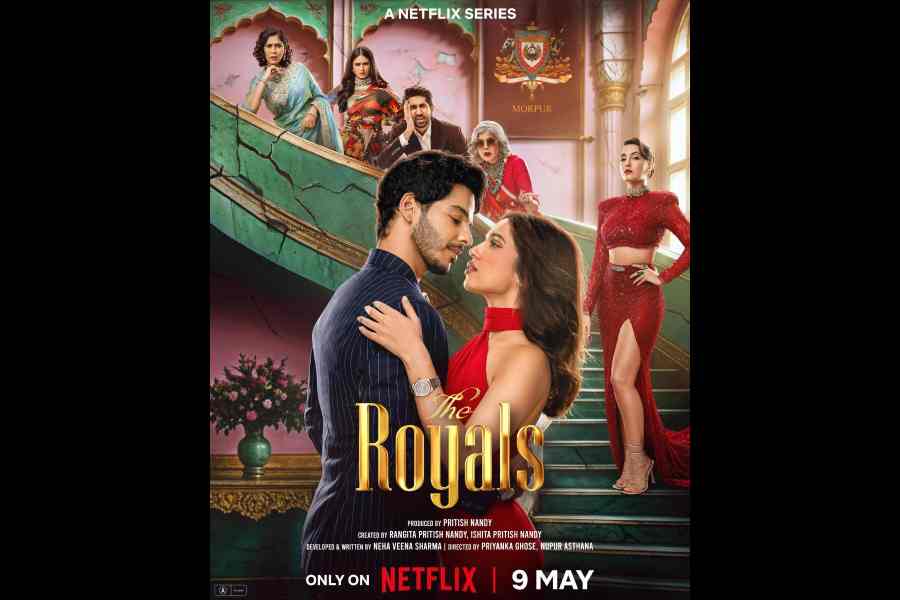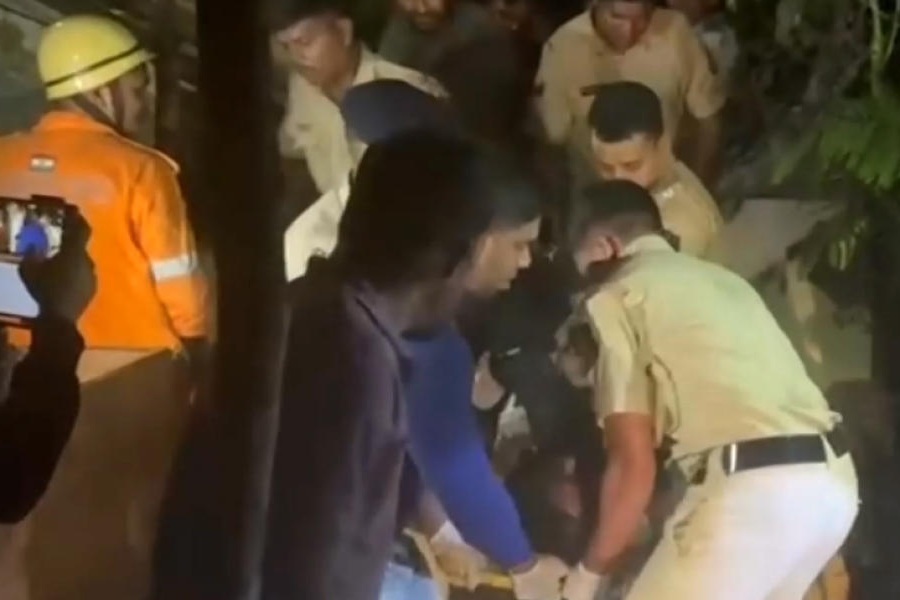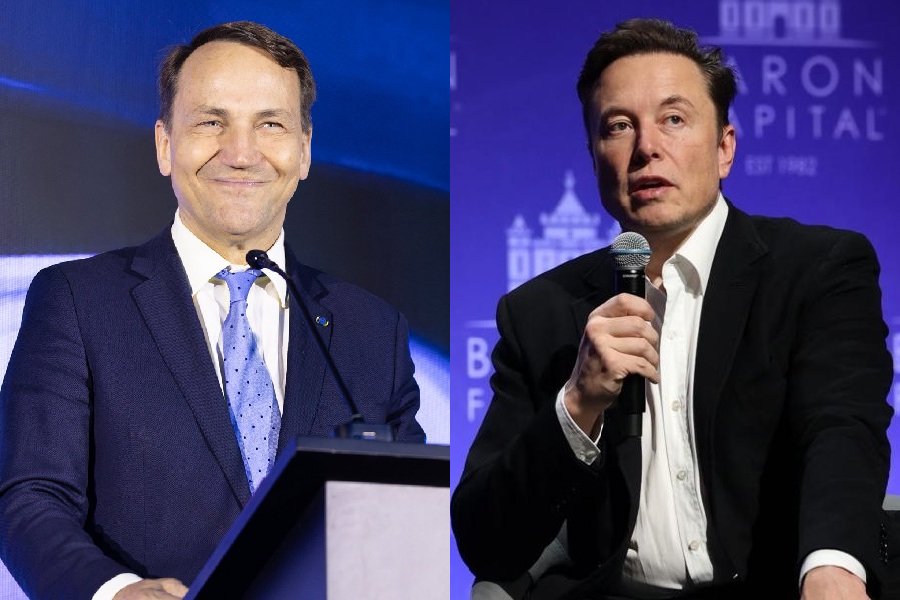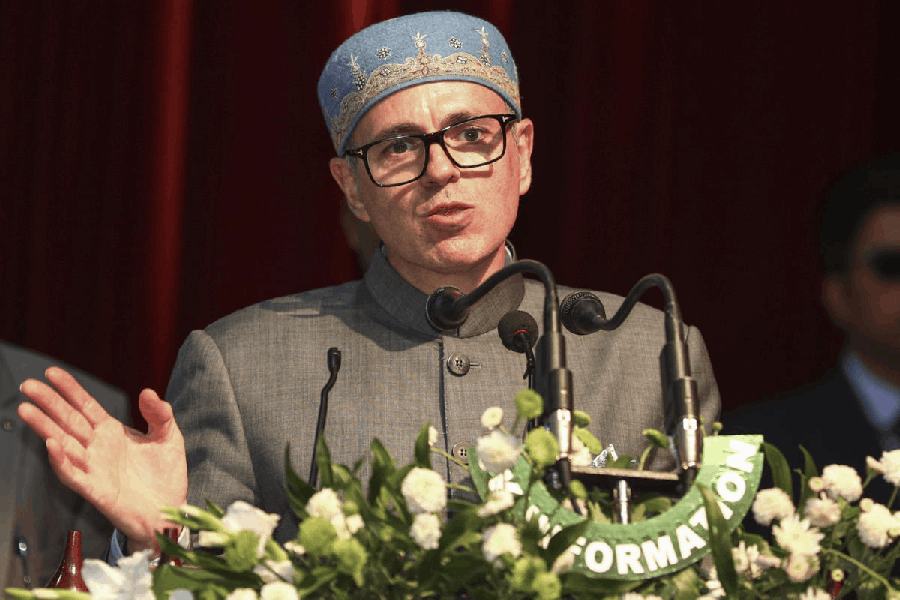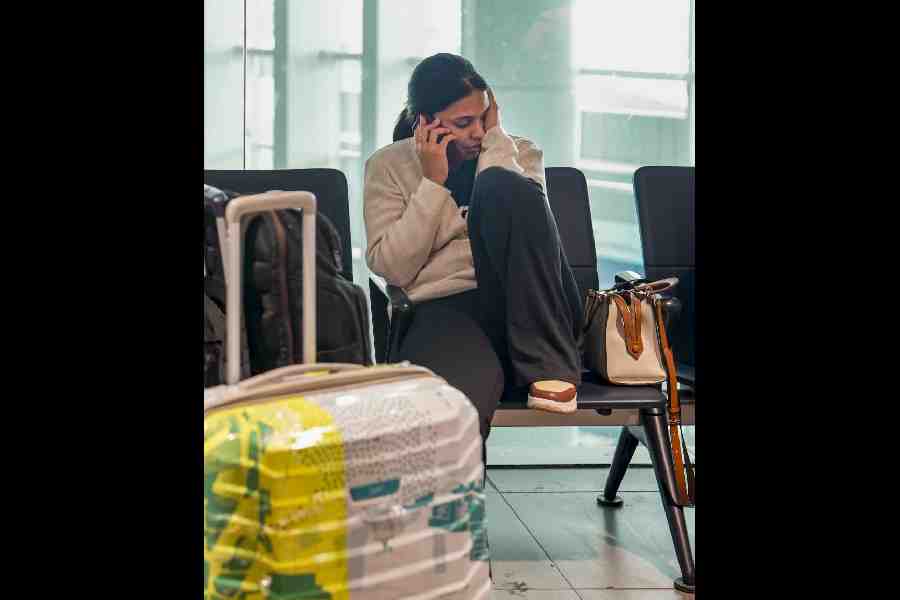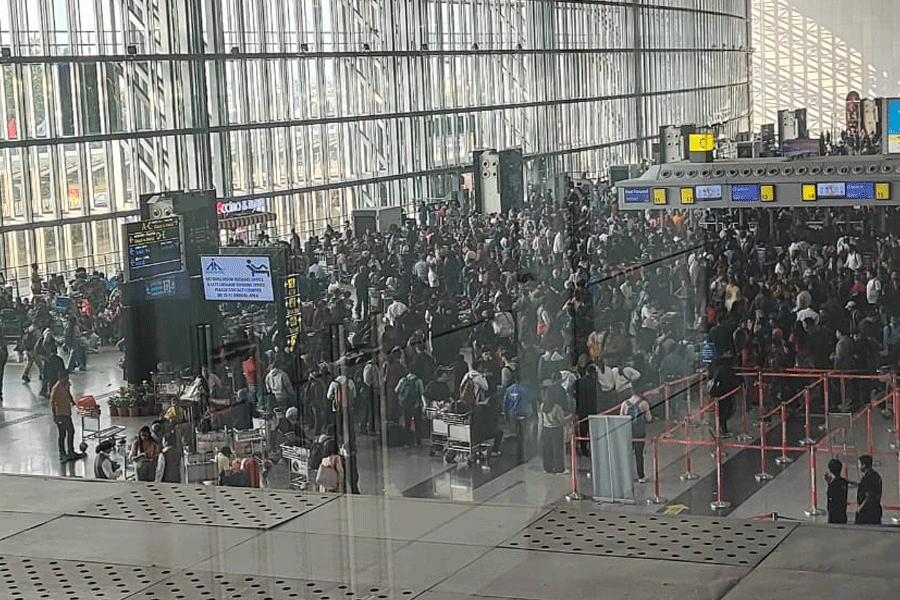If ‘thirst trap’ had an eight-episode embodiment, it would be called The Royals. Netflix’s newest offering — a Mills & Boon paperback set in the visually rich world of Indian royalty — has its leading man Ishaan Khatter dropping his shirt at the drop of a hat. From that first scene of the actor riding a horse on the beach with next to nothing on him, you know that Ishaan is here to satiate the female gaze. Which the actor — earnest, charismatic — manages to achieve to some extent.
But I longed for a more brooding, almost Byronic hero. One so tortured by his past that he is unable to forge meaningful relationships in the present. Heathcliff-ian to some extent, perhaps, within as much as the gilded world of The Royals would allow. What we get instead in Ishaan’s Aviraaj Singh is a man child — a poor little rich prince who, when faced with a sticky situation, either shuts himself out or throws a fit or stomps off in anger. Sometimes he does all three together. Always to the viewer’s chagrin.
Facing off against Aviraaj — who, as royalty demands, is nicknamed ‘Fizzy’ — is self-made startup ‘queen’ Sophia Kanmani Shekhar. Played by Bhumi Pednekar, who has a wardrobe no CEO wears to work, Sophia and Aviraaj start off on the wrong foot, and continue to spar — sometimes through words, sometimes with their lips glued to each other — when she lands up in the fictional town of Morpur, somewhere in Rajasthan.
Following the death of his father (Milind Soman is seen mostly in photographs sourced from his modeling days), Aviraaj is the reluctant, moping maharaja-in-waiting, and with Morpur facing testing times financially, Sophia is here to launch her grand plan of a ‘Royal B&B’ — one which allows commoners (courtesy this show, I now know that ‘aamkumari’, the antonym of ‘raajkumari’, is a word that exists) to not only vacation in a palace but also hobnob with royalty. In the middle of all the demographics and economics, Aviraaj and Sophia aim to conjure some chemistry, but in the true tradition of the ‘opposites attract’ genre, there is always an obstacle around to make either — or both — sulk in a corner.
One cannot judge The Royals through the prism of Citizen Kane. It is definitely not high-brow, high-stakes content. To a sizeable extent, it delivers what it promises, which in Silk-speak from The Dirty Picture translates to ‘entertainment, entertainment, entertainment’. What we get is a somewhat easy though slightly protracted and repetitive plot, gorgeous-looking people, pretty locations, enviable clothes, jaw-dropping jewellery, lots of drama and a dash of romance. But the drama is often undercooked and the romance lacks the firepower it should have had.
Created by Rangita Pritish Nandy and Ishita Pritish Nandy, The Royals is in the same vein as the sisters’ Four More Shots Please. Which also means that it has convenient plot points, contrived situations and sometimes, a forced attempt at inclusivity. But that, for a series like The Royals, is par for the course.
This show is, of course, set in a far more opulent world than most others. We are talking towering palaces, characters dripping diamonds, polo matches, masquerade balls, choreographed dances, lavish fund-raising dinners, special appearances from the likes of couturiers Abu Jani-Sandeep Khosla, and an eclectic ensemble cast peppered with prominent names like Zeenat Aman, Sakshi Tanwar, Nora Fatehi, Chunky Panday and Dino Morea. Sakshi, as expected, is the most solid of the lot, playing a queen with some level of agency. Zeenat, though stilted in presence and dialogue delivery, is always welcome on screen. Chunky is his usual goofy self, Nora shows off her usual dance moves, and Dino plays a royal called Salad, short for Salauddin Khan.
Among the younger actors, Lisa Mishra, Udit Arora and Vihaan Samat largely get the memo, but comedian Sumukhi Suresh is sadly typecast.
The Royals, as mentioned earlier, is in a bit of a hurry to tick off boxes, among which is an LGBTQIA+ angle. While it seems organic in one instance and is an essential plot point, there is another in which it feels like mere tokenism.
The series, which drags towards the end, works in parts, and though the leads often get annoying with their unnecessary childish bickering, you bear with it because in these testing times of crisis and information overload, The Royals doesn’t demand much from its viewers.
But what we do demand is more sizzle between Bhumi and Ishaan. Instead, what we primarily get from Fizzy and Co. is, well, frazzle and fizzle. Which Zeenat’s character, in a meta moment, sums it up with: ‘Hum kuch karte nahin hain... hum bas hain’. She was talking about royals in general, but, in many ways, it says so much about The Royals.
I liked/ didn’t like The Royals because... Tell t2@abp.in

